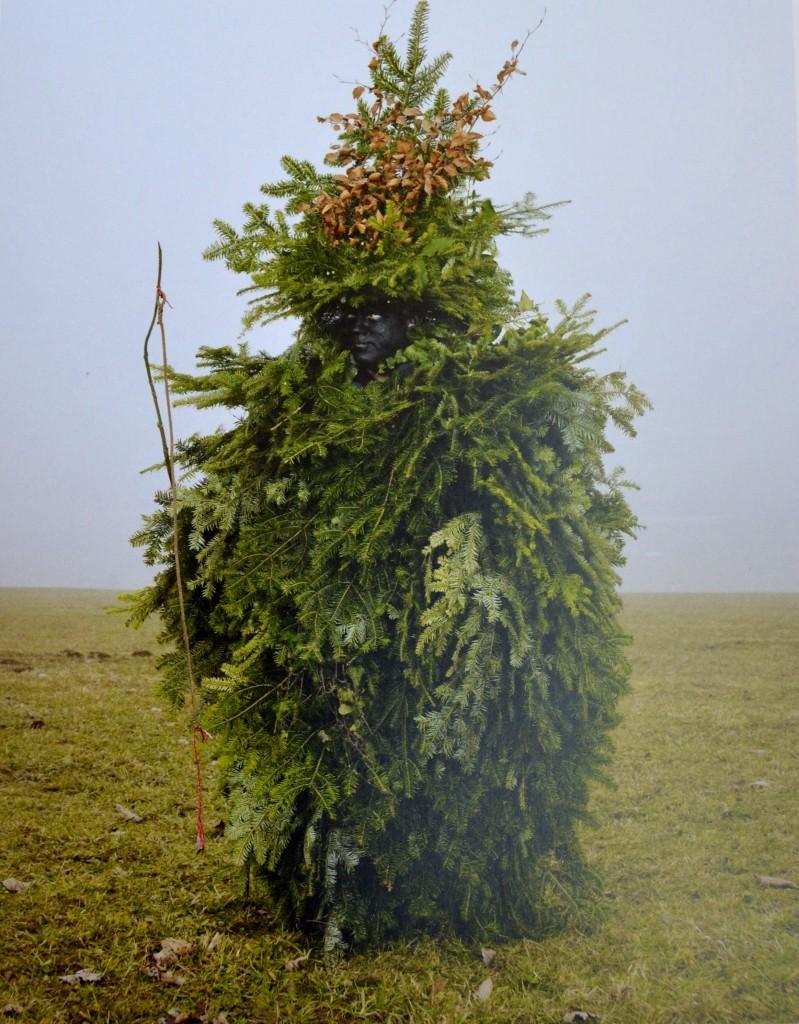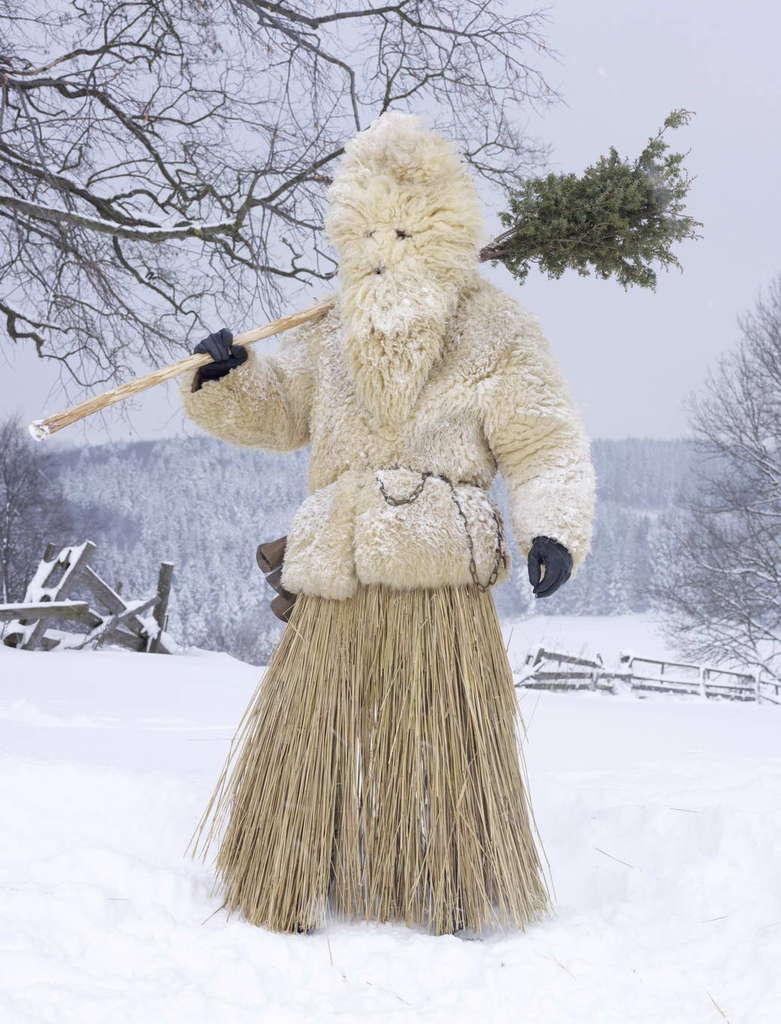At the imaginary margins of “secular-rationalist” Europe there be monsters. In fact, there are so many folk-monsters roaming the countryside that French photographer Charles Freger spent a few years shooting them. They now appear, in all their pagan ritual glory, in the recently published Wilder Mann: The Image of the Savage (2012). The blurb reads:
The rituals are centuries old and celebrate the seasonal cycle, fertility, life, and death. People literally put themselves into the skin of the “savage,” in masquerades that stretch back centuries. By becoming a bear, a goat, a stag, a wild boar, a man of straw, a devil, or a monster with jaws of steel, these people celebrate the cycle of life and seasons. The costumes amaze with their extraordinary diversity and prodigious beauty. Work on this project took leading French photographer Charles Fréger to eighteen European countries in search of the mythological figure of the Wild Man.
Freger’s photos are generating some minor buzz about the “still practiced pagan rituals of Europe.” Over at the Times, James Estrin begins his piece with a progressive paragraph that could have been lifted from any number of cultural evolutionist books from the late 19th century:
Charles Fréger was fascinated by what the human race lost over the millenniums when it evolved from hunter-gather to farmer and, eventually, urban dweller. After learning that there were Europeans who continued ancient pagan rites of celebrating the winter solstice and the beginning of spring, he set out to examine what traditions faded as people became more civilized.
This is a standard modernist trope; the dominant doxa is that we Western moderns have become rational, civilized, and perhaps even scientific. In the primitive and “wild” past things were supposedly much different. This seems doubtful – modes of production and technologies can advance or “progress” without major changes in prevailing modes of thought or worldviews. For most people alive today, including “moderns” in the West, advanced technologies and “primitive” worldviews can (and do) peacefully co-exist. Dominant modes of thought really haven’t changed all that much since we supposedly emerged from the mythopoeic or “primitive” past.
Regardless, Freger’s photographs are arresting and remind me of the European alp demons I covered in this post. Along those same lines, Freger brings us these tree and bough spirits:


It seems only appropriate to append these images with some spruce words from Chapter 10 (“Relics of Tree Worship in Modern Europe”) of James George Frazer’s Golden Bough:
We have now to show that the tree-spirit is often conceived and represented as detached from the tree and clothed in human form, and even as embodied in living men or women. The evidence for this anthropomorphic representation of the tree-spirit is largely to be found in the popular customs of European peasantry.
There is an instructive class of cases in which the tree-spirit is represented simultaneously in vegetable form and in human form, which are set side by side as if for the express purpose of explaining each other. In these cases the human representative of the tree-spirit is sometimes a doll or puppet, sometimes a living person, but whether a puppet or a person, it is placed beside a tree or bough; so that together the person or puppet, and the tree or bough, form a sort of bilingual inscription, the one being, so to speak, a translation of the other. Here, therefore, there is no room left for doubt that the spirit of the tree is actually represented in human form.
Humans are so wonderfully and primitively weird.

